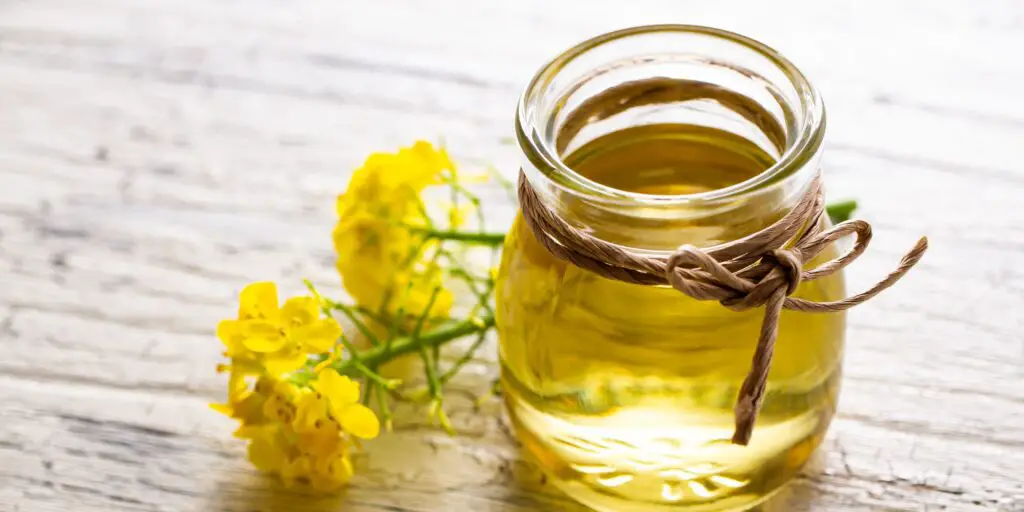The art of seasoning cast iron cookware has long been a subject of passionate debate among culinary enthusiasts. Central to this debate is the choice of oil—a decision that can significantly impact the performance and longevity of these beloved kitchen staples. While some swear by traditional oils, others advocate for modern alternatives, each claiming superiority in creating the sleekest and longest-lasting layer of seasoning.
This article delves into the heart of this discussion, exploring the various oils used for seasoning cast iron, their benefits, and drawbacks. From understanding the science of seasoning to debunking common myths, we aim to provide a comprehensive guide for both novices and seasoned cast iron users, ensuring your cookware reaches its full potential.
Understanding Cast Iron Seasoning
Seasoning is the cornerstone of cast iron cookware maintenance, a process that is as much an art as it is a science. At its core, seasoning is the creation of a protective and non-stick layer on the surface of cast iron through the application and heating of oil. This procedure transforms the oil into a hard, slick coating that bonds to the metal, a process known as polymerization. The repeated application of thin oil layers followed by heating leads to the buildup of this seasoning, enhancing both the cookware’s performance and longevity.
The properties of a well-seasoned cast iron skillet are multifaceted. Firstly, it creates a natural non-stick surface, crucial for cooking and releasing food easily. This attribute is particularly important given that cast iron, unlike modern non-stick pans, does not contain synthetic coatings. Secondly, seasoning acts as a barrier against rust. Cast iron is prone to rusting when exposed to moisture, but the seasoned layer protects the metal by repelling water and preventing oxidation. Finally, a well-maintained seasoned layer contributes to flavor enhancement. Over time, the seasoning absorbs and retains flavors from cooking, gradually enriching the taste of food cooked in the skillet.
Understanding the dynamics of seasoning is key to effectively using and preserving cast iron cookware. Each oil used in the seasoning process brings its own set of properties, influencing the durability, efficacy, and maintenance of the seasoning layer. As such, the choice of oil is not just a matter of preference but an important decision that affects the skillet’s overall cooking performance.
Discussing this topic in detail will overly bloat this article to death. So, please read our primer on cast iron seasoning to get you started with the subject.
4 Factors To Consider When Choosing a Cast Iron Seasoning Oil
Selecting the right oil for seasoning cast iron is a decision that should be informed by several key factors. Understanding these can help in achieving an optimal seasoning layer that is durable, effective, and safe.
1. Smoke Point
The smoke point of an oil is the temperature at which it begins to smoke and break down. This is crucial in seasoning, as the oil must partially oxidize and polymerize to form a hard, protective layer. Oils with a higher smoke point are generally preferred because they can withstand the high temperatures required for seasoning without breaking down into harmful compounds. Moreover, oils with high smoke points are less likely to completely burn and flake off later on.
2. Viscosity and Thickness
Thicker oils can create a seasoning layer that is too heavy and prone to stickiness or unevenness. Lighter oils tend to be easier to work with, enabling the formation of a thin, even coating that is ideal for seasoning.
3. Fatty Acid Composition
The type of fatty acids in the oil influences the polymerization process. Edible oils are categorized into two categories: unsaturated and saturated. While you can season your pan with saturated fats (butter, lard, etc.), they generally have high viscosity levels, which means that they are more likely to form a thick and sticky layer of seasoning that is prone to flaking. Meanwhile, oils rich in unsaturated fats (canola, vegetable, etc.), are more reactive, which means that they can form the chains necessary in the polymerization process,. Also, they have low viscosity levels, which means that using them as seasoning will be easier than unsaturated fats.
4. Rancidity and Stability
Some oils, especially those high in polyunsaturated fats, can go rancid more quickly. This not only affects the flavor but can also compromise the integrity of the seasoning layer. Oils with higher oxidative stability, which are less prone to rancidity, are preferable for long-lasting seasoning.
A Complete List of Oils for Cast Iron Seasoning
Seasoning a cast iron skillet can be done with a variety of edible oils, each with its unique properties. Here’s a comprehensive list, including details about their smoke points, flavor profiles, fatty acid composition, and viscosity.
| Oil Type | Smoke Point | Flavor | Fat Type | Viscosity | Cost |
| Almond Oil | 232°C (450°F) [2] | Light, nutty | Unsaturated | Medium | Moderate |
| Avocado Oil (Refined) | 271°C (520°F) [2] | Mild, buttery | Unsaturated | Low-Med | Moderate |
| Butter | 177°C (350°F) [2] | Rich, creamy | Saturated | Low | Moderate |
| Canola Oil | 255°C (468°F) [1] | Neutral | Unsaturated | Low-Med | Inexpensive |
| Coconut Oil | 191°C (375°F) [1] | Coconut/Neutral | Saturated | Medium | Moderate |
| Corn Oil (Refined) | 232°C (450°F) [2] | Mild, sweet | Unsaturated | Medium | Inexpensive |
| Flaxseed Oil (Refined) | 107°C (225°F) [2] | Mildly nutty | Unsaturated | Med-High | Moderate |
| Hazelnut Oil | 221°C (430°F) [2] | Rich, nutty | Unsaturated | Medium | Expensive |
| Grapeseed Oil | 268°C (514°F) [1] | Light, slightly nutty | Unsaturated | Low | Moderate |
| Lard | 204°C (400°F) [2] | Rich, savory | Saturated | High | Inexpensive |
| Olive Oil (Extra Virgin) | 206°C (403°F) [1] | Fruity, peppery | Unsaturated | Medium | Moderate |
| Olive Oil (Virgin) | 175°C (347°F) [1] | Mild, fruity | Unsaturated | Medium | Moderate |
| Olive Oil | 208°C (384°F) [1] | Neutral | Unsaturated | Medium | Moderate |
| Olive Pomace | 238°C (460°F) [2] | Mild, light | Unsaturated | Medium | Moderate |
| Peanut Oil | 226°C (439°F) [1] | Slightly nutty | Unsaturated | Medium | Moderate |
| Rice Bran Oil | 237°C (459°F) [1] | Neutral, light | Unsaturated | Medium | Moderate |
| Safflower Oil (Refined) | 232°C (450°F) [2] | Neutral | Unsaturated | Low | Inexpensive |
| Sesame Oil (Semi-refined) | 232°C (450°F) [2] | Strong, nutty | Unsaturated | Medium | Moderate |
| Shortening (Vegetable) | 188°C (370°F) [2] | Neutral | Saturated | Low-Med | Inexpensive |
| Soy Oil | 232°C (450°F) [2] | Neutral, mild | Unsaturated | Medium | Inexpensive |
| Sunflower Oil | 255°C (491°F) [1] | Neutral, light | Unsaturated | Low-Med | Inexpensive |
| Walnut Oil (Semi Refined) | 204°C (400°F) [2] | Rich, nutty | Unsaturated | Medium | Moderate |
[2] Jacqueline B. Marcus, Culinary Nutrition: The Science and Practice of Healthy Cooking, 2013
* All temperature figures have been rounded off to the nearest whole number.
So, which one of these are the best?
What’s the Best Oil for Cast Iron Seasoning?

Determining the “best” oil for seasoning cast iron is subjective and depends on various factors including smoke point, type of fatty acids, flavor, and personal preferences. But if you ask me, the best oil for cast iron seasoning is canola oil – here’s why I think it is the best:
- Canola oil has a high smoke point (255°C or 468°F), which means that it can handle most cooking applications without burning the seasoning off. This makes it less likely to cause your seasoning to flake later on.
- It contains more unsaturated fats and is not too viscous. This makes it easier to apply a thin layer of seasoning to prevent your cast iron from becoming sticky, and the seasoning from peeling off.
- It is generally a lot more affordable and more widely available compared to other oils with similar or superior characteristics like grapeseed oil, avocado oil, and sunflower oil.
Oils from animal sources (butter, lard, tallow) may be the traditional choice for cast iron seasoning, but I think that their natural flavors will be wasted in this process. Just use an affordable and flavorless oil like canola and save these animal fats for cooking!
Understanding Cast Iron Seasoning Science
In the journey of mastering cast iron cookware, selecting the right seasoning oil is a pivotal step. While the debate over the “best” oil may persist, understanding that each oil brings its unique qualities to the table empowers you to make an informed choice.
If you want to learn more about cast iron cookware, apart from how to store cast iron cookware, go ahead and explore Cult of Cast Iron for more guides and blog articles! Cult of Cast Iron is your ultimate source of information and inspiration for anything and everything cast iron cookware.
Join the Cult of Cast Iron today and discover the wonders of cast iron cookware!

Miguel is a cast iron enthusiast from Cavite, Philippines. He works in the digital marketing field as a content marketing strategist. On the side, he manages a small online bookstore and tends to his plants.


The articles are very useful, but several references to various links are not active within the text provided. For example, in the cast iron seasoning discussion the sentence that states something like a chart with “smoke points can be found here” contains no active component that leads to that resource to support the claim. That is just one example. I suggest that some serious site maintenance, i.e. editing to match links with text, is surely warranted. Otherwise, the site is very helpful and written well.
Hi Kim, thanks for the constructive criticism, and great catch!
That article with the missing “smoke points can be found here” link was written and published a few months before I published the cast iron seasoning oil smoke point cheat sheet. I guess I forgot to link it back to that. This is fixed now. Thank you!